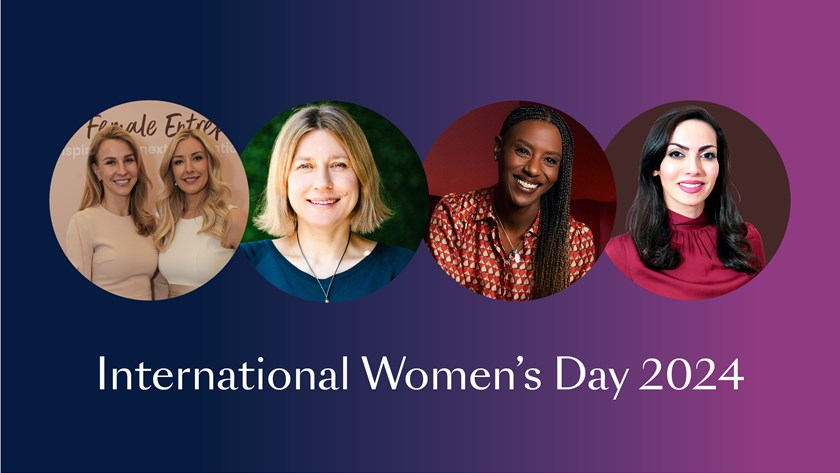Unconscious bias: the hidden but harmful way that we perceive others
Blog

In the post-war years, the UK was guilty of door signs reading “No Irish, No Blacks, No Dogs”. Thankfully, we have moved a long way forward since then, with discriminatory behaviour rarely being so overt today. But with discrimination issues continuing to dominate the headlines (the likes of the #MeToo movement and its fight against gender inequality, the Bulgaria football team’s recent racism towards England players, press interest in the dating app Tinder’s exclusion of transgender people), and discrimination allegations increasingly cropping up on HR professionals’ to-do lists, it is clear we still have a long way to go.
You may have heard the term “unconscious bias”. It recently hit headlines in connection with “The Apprentice”. During the current series, the first four candidates to receive Lord Sugar’s piercing glare, pointing finger and the powerful parting words of “you’re fired!” just so happened to be four non-white individuals. This sparked an interesting conversation about Lord Sugar’s potential unconscious bias. Similarly, the BBC’s argument in Samira Ahmed’s equal pay claim that she and Jeremy Vine perform different roles - in that her show is “niche” while Jeremy Vine’s role is to be the “audience’s friend” - has also raised the question of likability and, with that, the unconscious assumptions made about a person’s value.
In a recent Court of Appeal judgment in the case of Base Childrenswear v Otshudi, Ms Otshudi, a photographer of black African ethnicity, was made redundant. Although she believed this to be racially motivated, the employer initially stated the reasons were financial, and later indicated it was in fact due to her suspected stealing of clothes. The Court found that the dismissal was racially discriminatory as the conclusion that Ms Otshudi had stolen clothes was based on such little evidence that it had to have been influenced “by a stereotypical prejudice based on her race”.
But if such bias is unconscious, what can you do about it? To help reduce unconscious bias in the workplace, let’s examine exactly what unconscious prejudices are, how they affect us and what can be done to prevent them.
What is unconscious bias?
As much as we would all hope our decisions and views are rational and objective, unconscious biases are automatic feelings we have towards others that strongly influence our judgment of people, without us consciously considering them. Have you ever worked with someone who reminded you of someone else you know? The feelings and opinions you associate with that person probably influenced the way that you perceived your colleague. And have you ever hired someone based on a “gut feeling”? Here again, unconscious bias is at play. As these are unconscious assumptions, they are often extremely difficult to recognise.
Types of unconscious bias include:
- Affinity bias – when you gravitate towards or favour someone who is like you.
- Benevolent bias – treating someone differently based on a presumption about what they like or what’s best for them.
- Beauty bias – the view that the most good looking individual will be the most successful. This can also manifest itself in terms of other physical attributes like height.
- Perception bias – assumptions are formed about particular groups, which when relied on lead to a lack of fair and objective treatment of members of that group.
Why is it harmful?
Our biases can impact how we perceive or treat people, how much attention we give to people and how far we actively listen to what they are saying. Unconscious bias can therefore cause unintentional discrimination and poor decision-making, which can damage workplace diversity and inclusion.
Unconscious bias is not necessarily a bad thing – it’s a normal part of how humans make decisions, acting as a "mental shortcut" that fills in gaps in our knowledge with similar data from past experiences and cultural norms so that we can process information efficiently. Indeed, from a survival standpoint, bias is a positive and necessary trait; and it is not possible to eradicate it. However, when conducting a process which may impact on an individual's future employment, clearly bias (whether that is a negative or positive attitude towards certain traits) can have an entirely inappropriate influence.
Where unconscious bias affects workplace decision-making, it can result in unfair and sometimes illegal treatment and can potentially lead to legal disputes. Under the Equality Act, employers are prohibited from discriminating against employees (or prospective employees) because of “protected characteristics”, including age, race, disability, sexual orientation and sex. As illustrated by Base Childrenswear, Tribunals will consider the conscious or subconscious reason for treatment which is alleged to be discriminatory. Unconscious bias is therefore a real and present risk for organisations.
How can you deal with it?
- Training – Managers and decision-makers should be regularly trained to identify and challenge unconscious bias. It is important to implement training sensitively, so that decision-makers are reassured that their integrity is not being queried. Other employees should be aware of unconscious bias, so it is sensible to extend training to all staff. Explain why the training is taking place and the importance of diversity to a workplace.
- Goals – Set diversity targets for your organisation.
- Raise awareness – Encourage the discussion of workplace biases. Put workplace initiatives in place such as “unconscious bias day” or elect a diversity and inclusive representative to feed the message through your organisation.
- Surveys – Ask employees about their experiences with unconscious biases at work so that you are aware of it.
- Change your recruitment strategies – Unconscious biases often emerge during recruitment. You could use blind recruitment and exclude certain personal details from the early stages of the application process, such as age or what university the candidate went to. If you haven’t already, consider standardising your interview processes, as unstructured interviews can lead to bad hiring decisions. Encourage recruiters to get into the habit of asking themselves “Why did I react that way? Why did I form that judgment”? Make sure recruitment processes also involve a diverse panel.
- Analyse your promotion process – This is another key area in which unconscious biases can creep in. Question whether senior employees all share similar characteristics and backgrounds and if so, consider why.
- Justification – All key decisions should be recorded by staff, including a justification based on facts and evidence.
- Slow down – Our brains can process approximately 11 million things unconsciously. So, when we rush choices our brain relies on shortcuts ie biases, to make decision-making easier and quicker.
If you require further information about anything covered in this blog, please contact Tabitha Juster, Beth Balkham, or your usual contact at the firm on +44 (0)20 3375 7000.
This publication is a general summary of the law. It should not replace legal advice tailored to your specific circumstances.
© Farrer & Co LLP, November 2019







